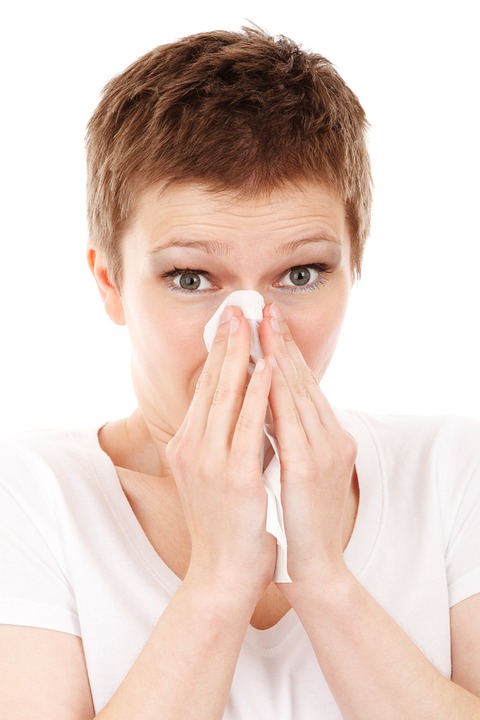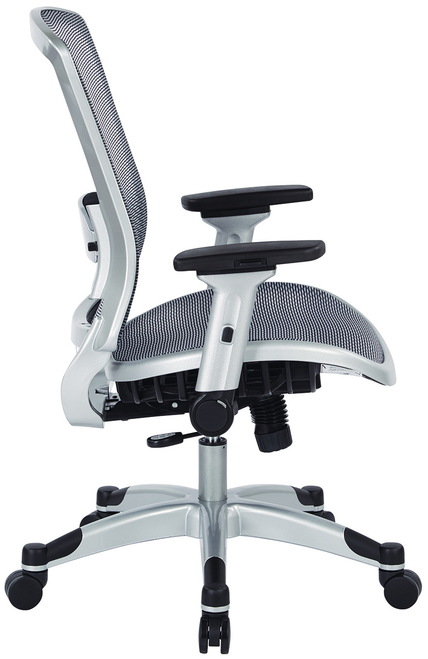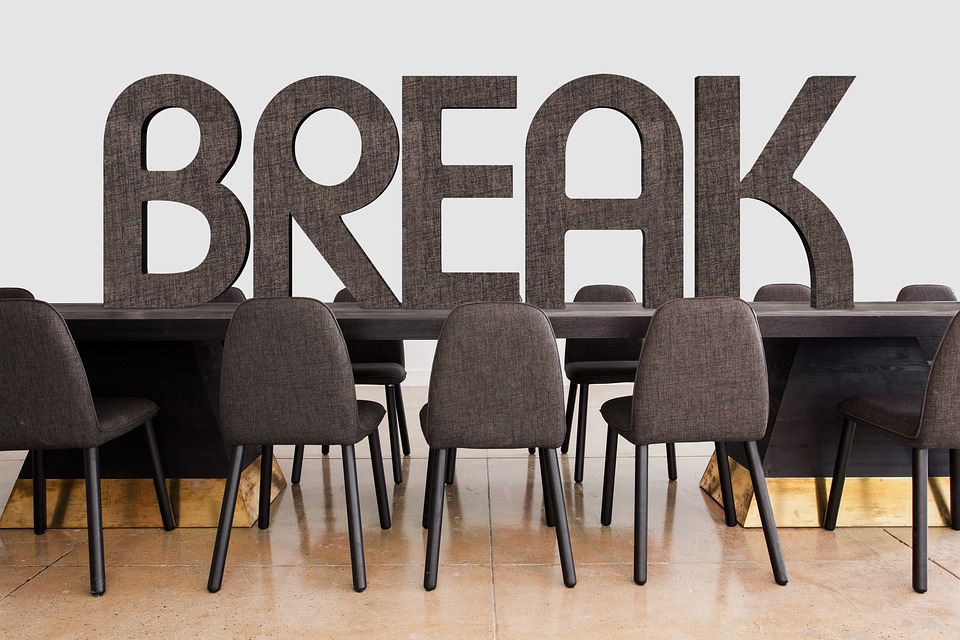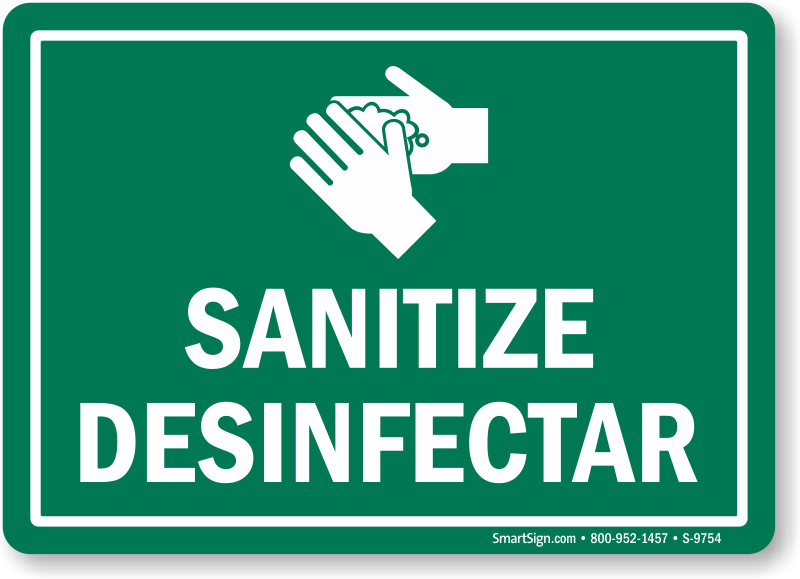How to Promote Health and Wellness in the Office
Wouldn’t it be great if we were healthy 365 days a year? Unfortunately, this isn’t the case. Statistics show that the average U.S. adult catches two to four cold viruses every year – and that’s just a single type of illness. There are dozens of other illnesses, including the flu, stomach bug, allergies, conjunctivitis and more.
When an office worker falls ill, it affects the entire company for which he or she works. According to the Integrated Benefits Institute (IBI), absenteeism and lost productivity attributed to sick employees costs U.S. companies approximately $227 billion per year. As an employer, you should follow some basic tips to promote health and wellness in the office and protect workers from illness.
Offer Free Immunizations

Getting vaccinated for the influenza (flu) virus is one of the most effective ways to protect against this otherwise common and debilitating illness. According to the Centers for Disease Control and Prevention (CDC), it lowers the risk of infection by 40% to 60%. Like other vaccinations, the flu vaccine triggers the immune system’s production of flu-fighting antibodies. Once these antibodies have been produced, the worker will typically have immunity for the respective flu strain for which the vaccine was developed.
The problem, however, is that many office workers neglect to get vaccinated for the flu. Some workers view it as an unnecessary expense, while others are skeptical of its effectiveness. When a significant number of office workers fail to get vaccinated, it increases the risk of widespread infection.
To promote better health in the office, consider offering free flu vaccinations to workers. The national pharmacy chain RiteAid, for instance, will host an onsite flu shot clinic at your workplace. CVS offers a similar onsite vaccination program. In just a few minutes, workers can receive a flu shot administered by professional pharmacist using these programs.
Encourage Workers to Take Vacations
It may sound counterproductive, but encouraging office workers to take vacations can improve your company’s productivity while reducing the risk of illness in the process. Vacation allows workers to hit the “reset” button so to speak, improving their physical and mental health. Workers who constantly clock in and clock out without taking a vacation are more likely to become ill than their vacation-taking counterparts.
But just because an officer worker has vacation time saved up doesn’t necessarily mean that he or she will use it. A recent survey conducted by the job review site Glassdoor found that fewer than one in four employees take all their vacation time. Rather, the average U.S. employee takes just 54% of his or her vacation time. To reduce the risk of worker illness and improve morale, encourage workers to take their vacation time.
Beware of Dirty Surfaces!

With dozens of workers crammed into such a small environment, offices are a haven for germs. From doorknobs and elevator buttons to phones and vending machines, these microscopic invaders are found everywhere in the office. Employers can reduce the risk of worker illness by keeping these otherwise germ-ridden surfaces clean.
A recent study conducted by the commercial cleaning solutions provider Kimberly-ClarkProfessional has revealed which surfaces in the office contain the most germs. For the study, researchers swabbed nearly 5,000 surfaces in offices for law insurance agencies, insurance companies, healthcare providers, telemarketing agencies and manufacturing companies. After collecting the samples, researchers from Kimberly-Clark Professional analyzed them for adenosine triphosphate (ATP), which is a molecule found in bacteria, mold, viruses and other organic matter.
According to Kimberly-Clark Professional, surfaces with an ATP level of 100 or greater should be scrubbed down and sanitized. When a surface has a level of 300 or above, there’s a high risk spreading illness. Researchers found the following office surfaces to contain ATP levels of 300 or above:
- 75% of bathroom faucet handles
- 48% of microwave handles
- 27% of computer keyboards
- 26% of refrigerator handles
- 23% of water fountains
- 21% of vending machine buttons
By sanitizing these surfaces on a regular basis, you’ll create a cleaner office while protecting workers from the transmission of illness-causing germs.
Wellness Program
You can also promote better health in the office by launching a wellness program. Known as corporate wellbeing in the United Kingdom, it’s designed to encourage employees to make healthier choices. The online retailer Zappos has a wellness program, offering employees free gym memberships, fitness classes, gold lessons, laser tag games, marathons and more. The accounting solutions provider Intuit also has a wellness program, offering free meditation and mindfulness classes.
The fundamental purpose of a wellness program is to encourage employees to make better choices regarding their health. Some companies do this through education and training, while others offer incentives. For instance, you can reward office workers with a gift card for participating in 5K runs, half marathons or full marathons. The allure of a free gift card is often enough to encourage employees to engage in fitness activities.
According to research cited by the U.S.Office of Disease Prevention and Health Promotion (ODPHP), every $1 a company spends on its wellness program yields an average return of $2 to $4. That’s a 400% return on investment, which is impressive to say the least. Research has also shown that implementing wellness programs in the office can reduce worker absenteeism and workers’ compensation and disability insurance by 25%. So, while creating a wellness program may require some initial investment of your time, money and resources, it usually pays off in the long run.
Choose Ergonomic Furniture

The right office furniture can promote a healthier, more productive workplace. Providing workers with ergonomic chairs and desks, for example, reduces the risk of musculoskeletal disorders (MSDs).
As explained by the Bureau of Labor Statistics(BLS), roughly 31% of all work-related injuries reported in 2015 involved MSDs. An MSD is any injury affecting the body’s musculoskeletal system, including but not limited to the joints, ligaments, tendons, muscles and nerves. Common examples of MSDs include back pain, carpal tunnel syndrome, tendonitis and thoracic outlet syndrome. So, how can ergonomic furniture protect against MSD injuries such as these?
Ergonomic office furniture is designed specifically to minimize stress and pressure on the body. In the past, manufactured paid little-to-no attention to the way in which their furniture affected workers’ bodies. This led to increased rates of MSDs, with employers footing the bill. Thanks to improvements in furniture design, manufacturers know offer a wide range of ergonomic furniture, all of which is designed to reduce stress and pressure on workers’ bodies.
Ergonomic office chairs, such as those offered here at Office Chairs On Sale, feature adjustable armrests, an adjustable height and lumbar support, the latter of which is particularly important. Without lumbar support, workers sitting in the chair will slump over. This unnatural position can eventually lead to back pain and other related problems of the spine. An ergonomic office chair with lumbar support protects against back pain by supporting the worker’s lower back. The supportive cushion at the bottom of the chair prevents the worker from slumping over; thus, offering a safer, more comfortable chair.
Offer Healthy Foods and Beverages

Of course, you can promote better health in the office by offering workers healthy foods and beverages. Whether you have a full-scale cafeteria or a small break room with vending machines, you should consider replacing junk food with more nutritious snack choices. Instead salty potato chips and sugar-stuffed candy bars, for instance, offer fruits, vegetables and sandwiches. And instead of sodas, perhaps you can offer bottled water and fruit juices.
You can even ask office workers for suggestions on what types of foods and beverages they’d like to see offered. By replacing junk food with more nutritious choices, you’ll encourage better health in the office.
Encourage Breaks

Under federal law, and many state laws, employers aren’t required to provide employees with meal or rest breaks. Nonetheless, you should still encourage office to take regular breaks throughout the day. According to some studies, workers who take short break while on the job are more focuses, experience less “burn out” and are more productive than their counterparts who don’t take breaks.
There’s also some belief that taking breaks can reduce the risk of illness. Statistics show the average office worker sits for approximately 10 hours a day. Office workers who aren’t allowed to take breaks won’t have the opportunity to stretch their legs and move around, which can lead to MSDs like those previously mentioned.
Allowing workers to take breaks can also reduce their stress levels, which subsequently reduces the risk of illness. Stress is something that we all experience; it’s actually a part of our body’s natural defense mechanism, the fight-or-flight response. When stress levels remain high for a prolonged period, however, it causes elevated levels of the hormone cortisol, which can negatively affect cholesterol, triglycerides, blood pressure and even our immune system. The bottom line is that employers should encourage office workers to take regular breaks, as it reduces stress and protects against illness.
Host Team-Building Activities
Even if you decide not to implement a wellness program in your workplace, you can still promote better health by hosting team-building activities. Softball or kickball games are a popular choice among health-conscious companies. After your business has closed for the day, you can encourage workers to stay for an additional hour or so to play a game of softball or kickball. It’s a fun way to build teamwork skills while also promoting better health in the process.
Another idea is to host a company-sponsored hiking or cycling event. Rather than staying cooped up in the office, this allows workers to enjoy the outdoors while engaging in physical fitness. Feel free to experiment with a variety of team-building activities to see which one generates the strongest response by workers. After all, a team-building activity will only benefit workers’ health if workers actually enjoy it.
Tell Sick Workers to Stay Home

When an office worker falls ill, the employer must make a choice: they can allow the employee to continue worker, or they can send the employee home. Some employers opt for the former option, believing it’s the best way to keep their business running smoothly. But doing so also increases the risk of transmission, exposing other workers to the illness.
As a result, one sick worker may cause dozens of other workers in your office to succumb to the same illness. This is why all health professionals advise against going to work if you are sick. As an employer, you should instruct sick workers to stay home until they feel better. If you’re worried about lost productivity due to the worker’s absenteeism, consider allowing him or her to work from home. Even if the worker can’t perform all of his or her duties from home, there are probably at least some tasks they can perform home.
Provide Hand Sanitizer

While it’s no substitution for handwashing, using hand sanitizer can reduce the transmission of illness-causing germs in the office. Hand sanitizer is designed to kill bacterial and viruses. You can install hand sanitizer dispensers throughout your office, or you can simply place hand sanitizer pump bottles on workers’ desks. Regardless, providing workers with hand sanitizer is an effective, low-cost way to reduce the risk of illness. With that said, it’s important to choose the right type of hand sanitizer.
According to the Centers for Disease Control and Prevention (CDC), hand sanitizer with an alcohol concentration of 60% to 95% is most effective at killing terms. Hand sanitizer that’s not alcohol based should be avoided for a few reasons. First, it doesn’t work for all types of germs (e.g. norovirus). Secondly, germs can develop a resistance to non-alcohol-based hand sanitizer. And finally, research shows that it simply inhibits the growth of germs instead of eliminating them.
It’s frustrating when multiple office workers call out sick at the same time. What began as a single case of the flu may have spread to half a dozen other workers. The good news is that you can lower the risk of worker illness and promote better health in your office by following the tips outlined here.
Recent Posts
-
How to Minimize Noise in Your Office and Increase Productivity
Loud noise is more than just a nuisance for office workers. It’s a major distraction that diverts w …Jan 28th 2019 -
How to Promote Health and Wellness in the Office
Wouldn’t it be great if we were healthy 365 days a year? Unfortunately, this isn’t the case. Statis …Jan 26th 2018 -
Sitting Disease
The Guide to Sitting Disease and Other Office Illnesses and How To Prevent Them Chapter …Dec 31st 2015






